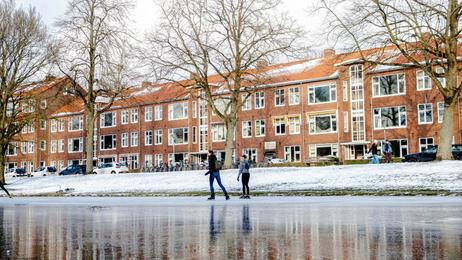Boarding Schools & Climate/Environmental Education: Are Residential Schools Leading the Way?
Introduction
In an era of accelerating climate change, schools bear a growing responsibility to prepare students not only academically but also environmentally. Among educational models, residential or boarding schools are uniquely positioned to integrate climate education deeply into campus life. But do boarding schools truly lead in environmental education, or is the advantage overstated?
This article examines how, in 2025, many boarding schools are taking leadership roles in climate and environmental education—through curriculum, operations, student empowerment, and institutional partnerships. We also assess constraints and outline best practices that day schools and public systems might emulate.
Why Boarding Schools Might Have an Edge
Boarding schools often enjoy structural advantages that make ambitious environmental programs more achievable:
24/7 campus life — Students live on site, so sustainable practices in dorms, dining, energy use, and waste management become part of daily life, not just a classroom add-on.
Integrated scheduling flexibility — With students available beyond class hours, schools can embed hands-on labs, evening projects, and weekend field expeditions tied to climate education.
Control over infrastructure — Many boarding schools own large campuses and can renovate or build with sustainability in mind (solar, green buildings, greywater systems).
Cohesive community culture — Shared values, house systems, dorm rituals can reinforce environmental stewardship in peer-to-peer ways.
That said, the degree of leadership varies substantially across boarding schools, regions, and funding levels.
Exemplars of Boarding Schools Leading in Environmental Education (2025)
Here are notable boarding schools actively integrating climate education and sustainability practices in 2025:
| School / Program | Key Features | Why It Matters |
|---|---|---|
| Hotchkiss School (CT, USA) | Farm-to-table dining via on-campus Fairfield Farm, embedded environmental curriculum, and institutional commitment to carbon neutrality. (Hotchkiss) | Students apply lessons on ecology, agriculture, and sustainability in real-life campus operations. |
| St. George’s School | LEED-certified buildings, renewable energy, waste-reduction programs, and marine biology courses integrated with the campus vessel Geronimo. (St. George’s) | The marine component turns local ecology into an educational resource. |
| Northfield Mount Hermon (NMH) | Multidisciplinary sustainability classes (e.g. global ethics, climate change) integrated into core academic offerings. (NMH) | Helps students connect environmental themes across the humanities and sciences. |
| Maplebrook School (NY, USA) | Greenhouse, organic gardens, seasonal trails, and garden-to-kitchen integration in a boarding/day setting. (Maplebrook) | Offers tangible, hands-on environmental skills for all students. |
| Institut auf dem Rosenberg (Switzerland) | Student-built greenhouse / cyber-agriculture projects, “wind-trees” renewable energy, and on-campus innovation labs. (Rosenberg) | Places students at the center of designing future-facing sustainability systems. |
These exemplars show a pattern: leading boarding schools are not just teaching sustainability but modeling it in how they run their campuses.
Core Pillars of Environmental Leadership in Residential Schools
From observing high-performing programs, several common pillars emerge:
1. Curriculum Integration & Interdisciplinarity
Many schools replace siloed “environmental science” with cross-disciplinary threads: literature, economics, ethics, and art all become platforms to explore climate issues.
2. Experiential & Field-Based Learning
Boarding schools can access their own woodlands, rivers, and lands for research. Students may conduct water-quality testing, biodiversity surveys, or restoration projects.
3. Institutional Operations as Living Laboratories
One hallmark of leadership is that operations themselves serve as teaching tools:
Renewable energy (solar, wind, geothermal)
Greywater recycling and rainwater harvesting
Organic farming and composting
Sustainable building design (green roofs, passive heating)
4. Student-Led Climate Governance
Top programs empower student councils, house systems, or “green teams” to propose and execute sustainability initiatives—everything from composting to campus-wide energy audits.
5. Partnerships & External Linkages
Leading schools partner with environmental nonprofits, local government, or university research programs. These linkages provide expertise, funding, and field access.
6. Accountability & Transparency
Rigorous boarding schools publish annual sustainability reports, carbon footprints, and goals for emissions reductions—creating accountability. Some also seek certifications (e.g. LEED).
Challenges & Constraints: Why Not All Boarding Schools Lead
Despite advantages, many boarding schools struggle to lead fully in environmental education:
High capital costs: Renewable energy systems or retrofits require significant investment.
Faculty preparedness gaps: Teachers must be fluent in environmental science and systems thinking.
Curricular pressure: Standardized testing may leave less room for place-based climate education.
Maintenance burden: Green systems require ongoing care and staff expertise.
Geographic limits: Urban schools may lack natural ecosystems for direct field study.
Public & Day Schools: Lessons from Boarding Leaders
While boarding schools may lead in depth, many of their best practices are adaptable to day schools and public systems:
Develop student green teams empowered to run projects.
Use school operations (lighting, waste, water) as teaching tools.
Build local partnerships (NGOs, universities, city agencies).
Integrate sustainability themes across multiple subjects.
Offer outdoor education or eco-camp residencies, even if short-term.
What “Leading” Looks Like in 2025 and Beyond
A boarding school can reasonably claim leadership if it demonstrates:
A carbon neutrality goal with transparent reporting
Sustainable operations across dorms, dining, and buildings
Cross-disciplinary sustainability curriculum
Student-led governance with real budget authority
External partnerships for research and fieldwork
Conclusion
Boarding schools are not inherently superior in climate education, but their structure gives them leverage many day schools lack. In 2025, a growing cohort of boarding schools do more than teach climate awareness—they embed sustainable choices into every corner of campus life and cultivate student leadership accordingly.
For prospective parents and students who prioritize environmental engagement, identifying boarding schools that model living sustainability (not just rhetoric) is key. And for the broader education sector, the innovations from leading residential schools offer a roadmap for scaling climate-minded learning to all schools.












